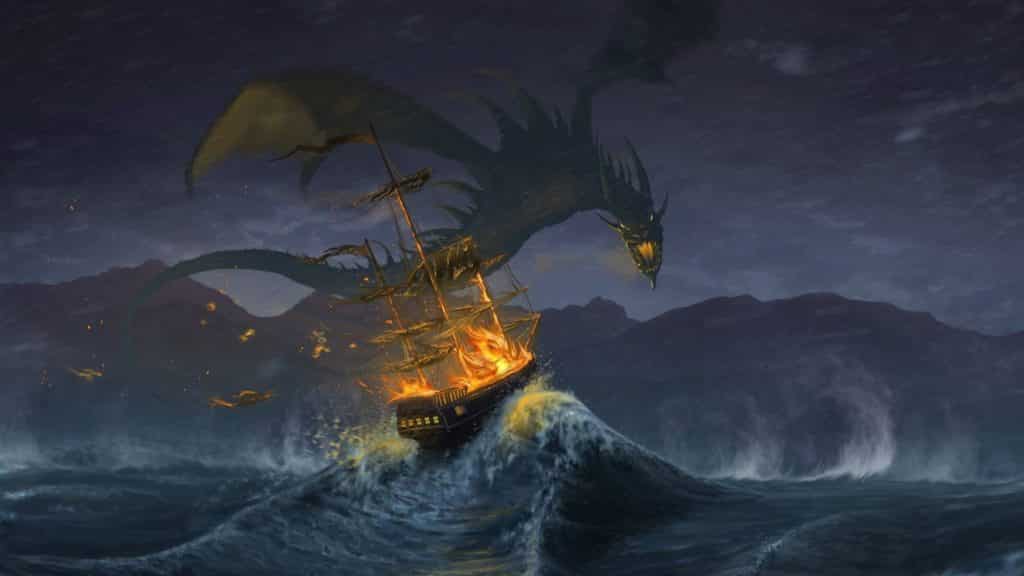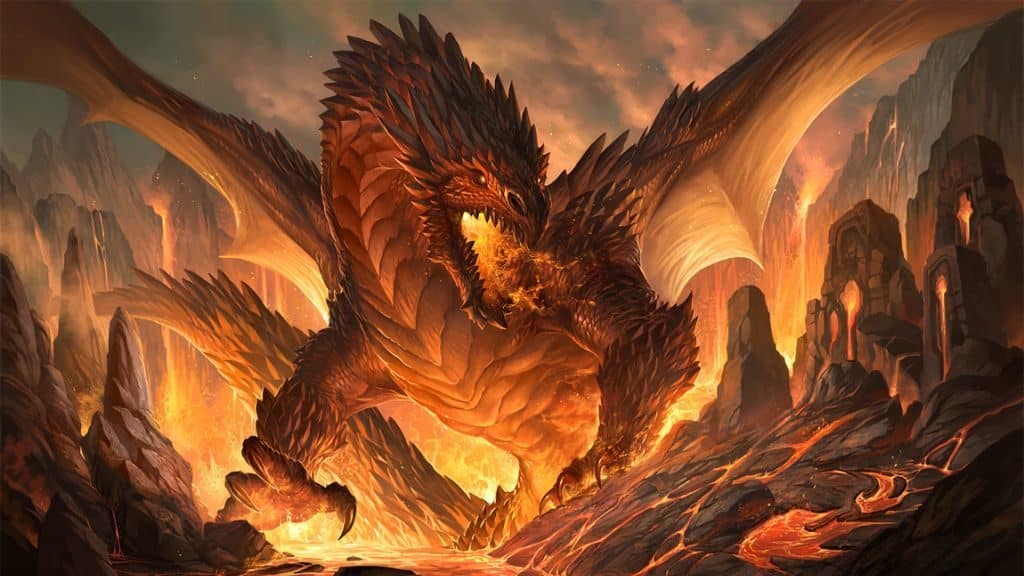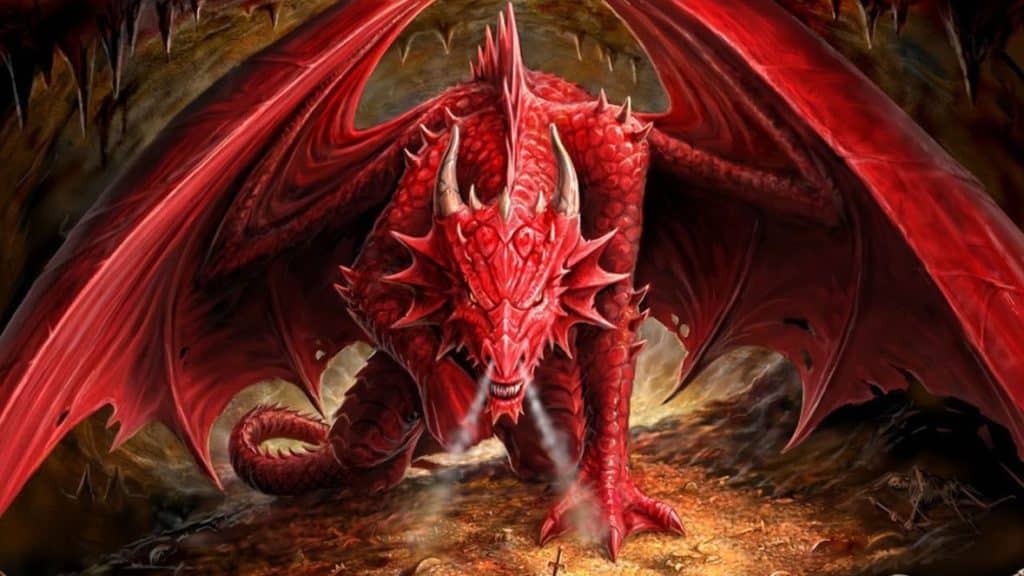St. George and the Dragon is one of the most iconic and enduring stories in Western folklore. With its roots in medieval mythology, the legend has been passed down through generations, captivating and inspiring people for centuries.
But what is it about this dragon legend that has captured our imaginations for so long? Is it the heroism of St. George, the fearsome dragon, or the timeless themes of good versus evil and courage in the face of danger? In this article, we’ll take a closer look at the legend of St. George and the Dragon, exploring its origins, its cultural significance, and its enduring appeal.
The legend of St George and the dragon takes us back over 800 years, and all the way to the Middle East. In one of the most famous and compelling dragon legends, we’re taken to a town in Libya that is being terrorised by a dragon. The petrified townsfolk ritually offer the dragon a sacrifice of a beautiful young maiden. When the it’s the King’s daughter who is next, the town needs a hero.
Where does the story come from?
For as long as there has been stories, there have been stories about dragons. You may already know that there are dragons in the Bible, and there are of course thousands of other dragon books, full of tales of different types of dragons.
Not only have there been stories about dragons, but there have been stories about those brave enough to take them on and slay them. In fact, one of the most popular dragon anime series of the last 20 years is Slayers.
Throughout the ninth and tenth centuries, there were tales and legends of a fearless saint who took on, tamed and killed a dragon. In the original tales you were more likely to hear about the brave Saint Theodore Tiro. By the 11th century, the narrative was firmly fixed on Saint George.
Who is Saint George?
As well as being the legendary dragon slayer, Saint George is also the patron saint of England, which is in the United Kingdom. A patron saint is the protector of a place, a person or an occupation. Other notable patron saints include Solange, who is the patron saint of shepherdesses (as well as being Beyonce’s sister!), Thomas Aquinas, the patron saint of students, and of course the Virgin Mary, the patron saint of the USA.
Despite not being English, George was made Patron Saint in 1350 for being a brave soldier, and one who would ride to England’s rescue in times of great peril. He was immortalised in Henry V, a play by William Shakespeare, when the King cries “Cry God for Harry, England and St. George!” In fact, the connections between Shakespeare and Saint George go further than that, as the playwright was born and died on April 23, Saint George’s Day.
What is the story of St George and the Dragon?
As you would expect with a story as old as this one, there are several different versions, but every single one agrees on a few key facts. So here is the story as Dragon University knows it.
In Silene, Libya in the Middle East, the townspeople live in fear of a terrifying, poisonous dragon who lives in a lake on the edge of the town. The dragon pollutes the area with his venom. To calm the dragon and stop him from him from killing the working men of the town, the people of Silene offer the dragon a sacrifice of two sheep every day.
But after a while, the sacrifice of sheep isn’t enough, and the dragon insists on more. Eventually it’s decided that the girls of Silene should be sacrificed to the dragon. The next girl is chosen by way of a lottery. Very much like Hunger Games, you may think?
One day, the King’s daughter was the unlucky girl chosen for sacrifice. This infuriated the King and broke the heart of the Queen. The King offered the people of Silene all of his gold, silver and jewels but they refused. And so the King’s daughter was sent to the dragon.
Just in time to save her life, George rides into town and comes across the scene at the lake, charging at the dragon with his lance and spearing him through the chest. The dragon, however, is not killed, but is tamed by George. So tamed in fact, that the princess is able to put a leash around his neck and pull him back into town.
The dragon, recovers, and as he does, becomes far less tame, once again terrorising the people of Silene. The town beg George to kill the dragon, which he says he will do only if they all convert to Christianity. After over fifteen thousand men have converted, George slays the dragon by chopping its head off with his sword.
The King is so grateful that he builds a church on the spot where the dragon was slayed. Soon a spring starts to flow with a water that cured all disease.
What are the different versions of the story?
Throughout history, the story of St. George and the Dragon has been retold and adapted by many different cultures, each with their own unique interpretations and variations.
In many European versions of the story, St. George is a knight who slays a dragon to rescue a princess. However, in some Middle Eastern and Asian versions, the dragon is instead seen as a benevolent creature who is protecting a valuable treasure or a sacred site. In these versions, St. George is often portrayed as a villain who seeks to take the treasure for himself.
The story has also been adapted by various religions. In Christianity, St. George is venerated as a saint and a martyr who courageously defended his faith against persecution. In Islamic tradition, the story is adapted to fit Islamic beliefs, with the dragon representing the forces of evil that St. George defeats.
As time has passed, the story has been retold in many different formats, including literature, art, and film. In literature, the story has been retold in works such as Edmund Spenser’s “The Faerie Queene” and Tennyson’s “Idylls of the King.” In art, the story has been depicted in many famous paintings, such as Raphael’s “St. George and the Dragon” and Paolo Uccello’s “Saint George and the Dragon.”
In modern times, the story of St. George and the Dragon continues to capture the imaginations of people around the world. It has been adapted into films, television shows, and video games. In popular culture, the story has been used as a symbol of heroism, strength, and bravery, inspiring countless people to face their own challenges with courage and determination.
Overall, the story of St. George and the Dragon has proven to be a timeless tale that continues to inspire and captivate people of all ages and cultures.
Did it really happen?
With any legendary tale like this, you do get the same questions. Did it really happen? Are dragons real? And the honest answer is that nobody knows.
There’s no doubt that there was certainly a brave soldier named George, who was sainted after his death. But most reports put his death at many hundreds of years before this story took place.
However, it is possible that all of this did happen during George’s lifetime, but the story didn’t enter into popular folklore until years later.
What we do know for certain is that the legend of St George and the Dragon is one of the classic and most compelling legends of all time, and one that will certainly be retold for many hundreds of years.
Interpretations and Symbolism Related to St. George and the Dragon
The story of St. George and the Dragon has inspired a wide range of interpretations and symbolism throughout history. One of the most common interpretations is that the story represents the struggle between good and evil, with St. George representing the forces of good and the dragon representing evil or chaos.
In Christian tradition, the story is often interpreted as a metaphor for the triumph of Christianity over paganism or other non-Christian religions. St. George, as a Christian martyr, represents the power of faith and the victory of Christ over sin and death. The dragon, meanwhile, represents the devil or other demonic forces that threaten to corrupt and destroy the Christian faith.
In some versions of the story, the dragon is also seen as a symbol of nature or the natural world. St. George’s defeat of the dragon can be interpreted as a triumph of human civilization over the forces of wilderness and barbarism.
Another popular interpretation of the story is that it represents the struggle of the individual against the forces of oppression or tyranny. St. George’s bravery and selflessness in facing the dragon can be seen as a model for individuals who must stand up to injustice and fight for what is right.
The story has also been interpreted as a symbol of the hero’s journey or the process of personal transformation. St. George’s battle with the dragon can be seen as a metaphor for the challenges and obstacles that individuals must overcome in order to grow and develop as human beings.
Overall, the story of St. George and the Dragon has inspired countless interpretations and has become a powerful symbol of courage, faith, and the triumph of good over evil. Its enduring popularity speaks to the universal human themes that it embodies and the timeless relevance of its message.
Adaptations and Influences Throughout Culture
The legend of St. George and the Dragon has been adapted and reinterpreted countless times throughout history, inspiring artists, writers, and filmmakers to create their own versions of the story. From paintings to films, from literature to video games, the tale of St. George and the Dragon has left a lasting impact on popular culture.
One of the earliest adaptations of the legend is the medieval mystery play, “The Killing of the Dragon,” which was performed across Europe during the Middle Ages. In the play, St. George is portrayed as a heroic Christian knight who defeats the dragon, which represents the devil. The play was often performed during religious festivals and served as a way to teach audiences about the Christian faith.
During the Renaissance, the legend of St. George and the Dragon was depicted in many works of art, including the famous painting by Raphael, which shows St. George slaying the dragon while a beautiful princess looks on. The painting became a popular image in European art and was replicated by many other artists over the centuries.
In the 20th century, the story of St. George and the Dragon was adapted into various forms of popular culture, including films, television shows, and video games. One notable example is the 1962 film “The Magic Sword,” which tells the story of a heroic knight who sets out to rescue a princess from an evil sorcerer and his dragon. The film was a hit with audiences and became a classic of the fantasy genre.
In recent years, the legend has continued to influence popular culture, appearing in everything from novels to comic books. Many modern interpretations of the story focus on the themes of heroism, bravery, and the fight against evil. The story has also been adapted to fit different cultural contexts, such as in Chinese folklore where the dragon is often portrayed as a benevolent creature.
Overall, the legend of St. George and the Dragon has had a profound impact on popular culture, inspiring countless adaptations and interpretations over the centuries. Its themes of heroism, bravery, and the fight against evil continue to resonate with audiences to this day.
Criticism of the St. George and the Dragon Story
The story of St. George and the Dragon has been analyzed and criticized for various reasons throughout history. Some scholars have noted that the story reflects the patriarchal society of the time, in which men were seen as heroic and women were often portrayed as weak or in need of protection. The damsel in distress trope, in particular, has been criticized as reinforcing gender stereotypes and perpetuating the idea that women need to be rescued by men.
Others have noted the religious symbolism present in the story, particularly the Christian imagery of St. George slaying the dragon as a metaphor for the triumph of good over evil. The story has been interpreted as a representation of the struggle between God and Satan, with St. George as a Christ-like figure and the dragon as a symbol of the devil.
The story has also been analyzed in the context of cultural imperialism, as the spread of the legend was often tied to the colonization of other nations by Western powers. Some have argued that the story was used as a tool to justify the subjugation of other cultures and to portray Western nations as the heroic saviors of the world.
Despite these criticisms, the story of St. George and the Dragon continues to be a popular tale in Western culture, inspiring numerous works of art, literature, and film. Many modern adaptations of the story have sought to subvert the traditional gender roles and stereotypes present in the original tale, presenting more nuanced and complex portrayals of the characters and their motivations.
Overall, the story of St. George and the Dragon remains a fascinating and complex tale that continues to capture the imaginations of people around the world. Its enduring popularity is a testament to its timeless themes of heroism, good versus evil, and the triumph of the human spirit over adversity.
Jokes About St. George and the Dragon
- Why did the dragon refuse to fight St. George? Because he didn’t want to get “saddled” with defeat!
- Why did St. George take up dragon-slaying as a hobby? He wanted to “scale” new heights of bravery!
- What did St. George say to the dragon before their epic battle? “I hope you’re ready to be ‘winged’!”
- Why did the dragon want to be friends with St. George? Because he heard he was a real “knight” in shining armor!
- What do you call a dragon that has been defeated by St. George? A “fire-extinguished” dragon!
Conclusion
As we’ve seen, the story of St. George and the dragon has a rich and complex history that spans centuries and continents. From its origins as a Christian legend to its many adaptations and interpretations across cultures, the tale has captured the imaginations of countless people throughout history. Its themes of heroism, sacrifice, and triumph over evil continue to resonate with audiences today, inspiring countless works of art, literature, and film.
But what is it about this story that continues to capture our imagination? Perhaps it’s the timeless appeal of the hero’s journey, as a brave knight faces off against a fearsome beast to save a helpless princess. Or maybe it’s the symbolism of the dragon as a representation of the dark and chaotic forces that threaten to consume us all, and the hero’s ability to overcome them with courage and determination.
Whatever the reason, the story of St. George and the dragon remains a beloved and enduring legend, inspiring us to be our best selves and face our own challenges with bravery and grace. Whether we encounter it in a children’s book, a classic painting, or a blockbuster movie, the tale never fails to stir our hearts and remind us of the power of the human spirit.
So let us remember the brave knight who slayed the dragon, and the many ways his story has touched our lives. As we face our own trials and tribulations, may we draw strength and inspiration from his example, and never forget that, with courage and faith, we too can overcome even the fiercest of foes.



